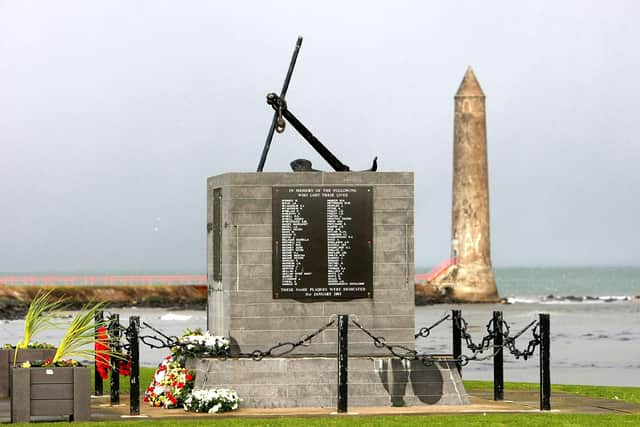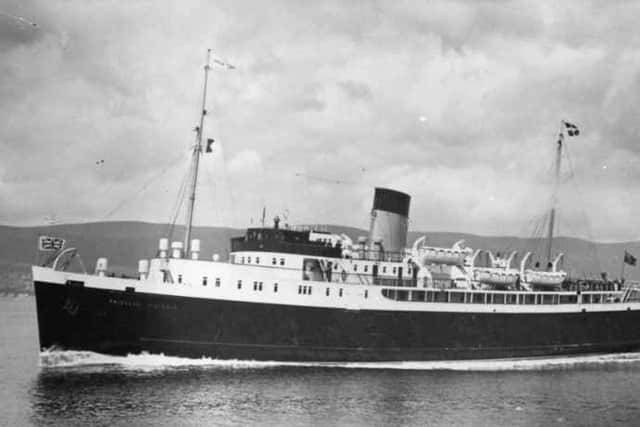Seaman recalls that last hours of the Princess Victoria at inquiry (1953)
and live on Freeview channel 276
Mr Thomas Boyd McQuiston of Stranraer, a cargoman on the Princess Victoria, said that when the ship sailed from Stranraer on the day she foundered, the cargo was stacked on flat trays along both sides of the car deck.
He said that it was well secured and was still being lashed on the journey up Loch Ryan. The stern doors were not used at Stranraer, because the berth used had no ramp, but the doors would have been used at Larne.
Advertisement
Hide AdAdvertisement
Hide AdHe said that the doors had been properly secured at Stranraer and were seen by Mr Duckies, the first officer, who examined them each morning and night before sailing.


McQuiston said that when they reached Corsewall Point he was on the turntable, about two-thirds of the way along the car deck from the stern, sorting newspapers, and saw a lot of water coming from aft.
On his way to the stern a second wave came along the deck, and he found the stern doors opened and twisted, as if something very heavy had struck them. All the parts and fittings of the doors were still there, but were buckled.
McQuiston said that Mr White, the second officer, and some seamen were trying to close the stern doors, but they were not successful. He could not say what was the depth of the water at that time. Mr Duckies then came down to the car deck, and they struggled for a while with the doors, but Mr Duckies told them it was no good, and that it was impossible to close them.
Advertisement
Hide AdAdvertisement
Hide Ad“I do not remember much about the last two or three minutes,” McQuiston said. “I assisted two or three of the passengers up to the rails, and I went over the rails myself and walked down the side of the ship. Well, I did not walk, for I actually ran down the side.”


“I went down as far as the Princess Victoria’s keel, and then got into the life-boat,” he said. “There were about six people in it, and we picked others out of the water. There was a sea anchor in the life-boat, but it seemed that the oars had been lost in the launching. The life-boat struck twice against the Princess Victoria’s hull, and then went near the propellers before drifting clear. After that we put out the sea anchor.
“The last life-boat drill was about a week before the Princess Victoria sank, and there were oars in the life-boats then.”
He said that after being in the life-boat for about an hour-and-a-half, he saw the first ship to come into the area. It was about 3.30pm, and this vessel was in the area of the wreckage from the Princess Victoria.